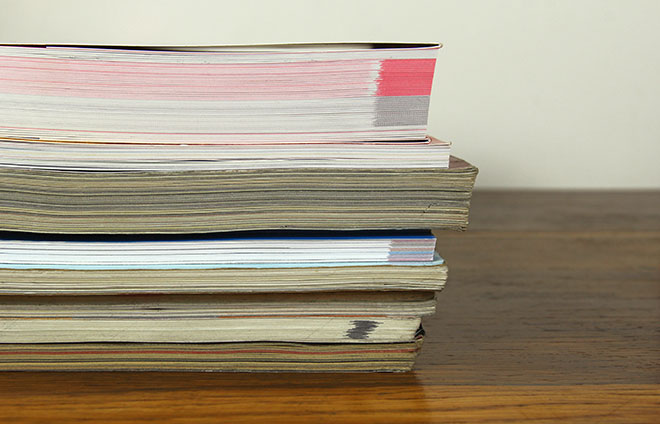How Does Journal Standardization Impact Intellectual Creativity?
It is a commonplace argument that academic life has been increasingly characterized by a pressure to publish. As Rob Warren has argued, researchers in American sociology departments have published almost twice as much in recent years compared to the 1990s. Science and technology studies (STS) research has documented that such concerns with maximizing publication output have reshaped scientific and scholarly workflows; for example, in terms of how scientists decide which research projects to pick, which collaborations to seek out, and when research projects should be considered completed. But do such practices also have broader implications for the intellectual makeup of a field, for example regarding the diversity of theories, concepts, practices and methods being developed?
In a recent article, we looked at the development of the journal article format in STS over the last four decades. Our paper draws on a large amount and variety of data. We conducted a scientometric analysis of 18 STS-specific journals indexed in the Web of Science (WoS), which shows that perpetual growth in the production of articles is accompanied by homogenization of article characteristics. Articles increasingly converge at around 20 pages, they contain between 50 and 60 references, and they are increasingly the product of collaborative authorship (although sole authorship remains prominent). STS journal literature also becomes more self-referential, in the sense that a growing share of authors publishing articles in WoS use other WoS publications as their main literature base – and thus potentially as a model for their own writing.

In a content analysis of articles published across separate time periods, we find more evidence of a growing standardization of publication formats. Journals in the early 1990s generally contained varied and more free-form publication types, like essays, opinion pieces, and more literary writing. A factor that facilitated communication in such varied formats was arguably the relatively smaller size of the STS community at the time. Scholars were more likely to know each other personally and so could more easily presuppose shared intellectual context. Over time, however, non-research article formats have become marginalized. Research articles moreover begin to follow the same formalized structure. For example, rather than simply presupposing their relevance to an unspecified audience, authors increasingly introduce their topics by outlining an explicit academic research demand or by mobilizing a conceptual framework from what is increasingly presented as a distinct body of STS literature. Authors also show a growing tendency to outline research methods in a dedicated section and to rely on a consolidated set of data collection methods (interviews, ethnographic work, documents, but less and less archival work).
Our interviews with 74 STS scholars reveal plenty of practical ways in which the standardization of the article format facilitates the research and publishing process for individual scholars. Early career STS scholars tend to react to prolonged periods of precarious employment by embracing a strongly productivity-oriented outlook. Juggling term-limited project contracts becomes more manageable when treated as the production of a typical form of output, since it allows for calculating investments and payoffs. Reliance on a typified article format also creates flexibility on the level of the actual writing process, for example by decoupling conceptual and empirical elements of an article that can then be treated as separate “work packages”. Overall, standardization appears to be driven by a practical interest of researchers to remove degrees of complexity from research practice, which streamlines their daily routines in a way that would not be afforded by a more heterogeneous publication culture.

A crucial question emerges from these findings: Is the growing standardization of the STS journal article a bad thing?
In principle, concentrating and organizing intellectual resources into reusable elements is inherently part of what researchers constantly do when they coordinate their work at collective levels, such as those of research groups, university departments, or entire research fields. The creation of research methods, instruments, as well as theoretical concepts can be seen as challenges that initially require painstaking attention and effort, but once they are well understood they can be “black-boxed” and reused by others with relative ease. The standardization of the article format contributes to this process. A relatively uniform article format provides a model for how to summarize and interpret earlier literature, frame research questions, and structure arguments. Concepts and theories can be more easily framed as transportable analytical resources that can be “applied” to new empirical problems. Not least, greater homogeneity in publishing formats reduces effort when resubmitting a manuscript to a journal after an initial rejection elsewhere, and it makes it easier to partition individual contributions around a minimal publishable unit.
Yet, the same efficiency gains can systematically foreclose certain sources of intellectual originality. Epistemic resources should be black-boxed only when they are sufficiently well understood and “boring” to researchers. But, where a specific form of communicating arguments becomes too dominant for the sake of facilitating the research process, it potentially encourages an artificial or accelerated black-boxing. One interviewee used the term “gestural theory” to denote a widespread practice of theoretical name-dropping that serves to situate manuscripts in STS literature through referencing, yet without substantively engaging with this work. A variant of pre-emptive black-boxing is the practice of coining concepts with the apparent aim of attracting “easy” citations. A common practice is to end literature review sections by proposing a new concept that is perceived to have modest innovative value, but that can be presented as part of the title or on the first page of the article and thus encourages readers to cite them. Yet other interviewees talked about a “cookie cutter” principle that seems to underpin many submissions to journals, “a certain kind of formula that (…) allows you to kind of pour content into a kind of existing mold.”
To be sure, plenty of original research across many disciplines is regularly published in otherwise conventional formats, and even producing a relatively conventional article in STS is not exactly a trivial matter (as we can attest from experience). Yet, we also believe that especially in interpretive fields, the perceived generative potential of research lies in enabling contributions that readers will find original, critical or otherwise inspiring. It is precisely this potential to generate surprise on a conceptual level that is at risk when a typical convention of how to frame arguments becomes too strong. Will STS be open and welcoming to diverse and varied intellectual traditions and concepts with this increasingly dominant typical article format? On the basis of our findings, we are not so sure.































































































